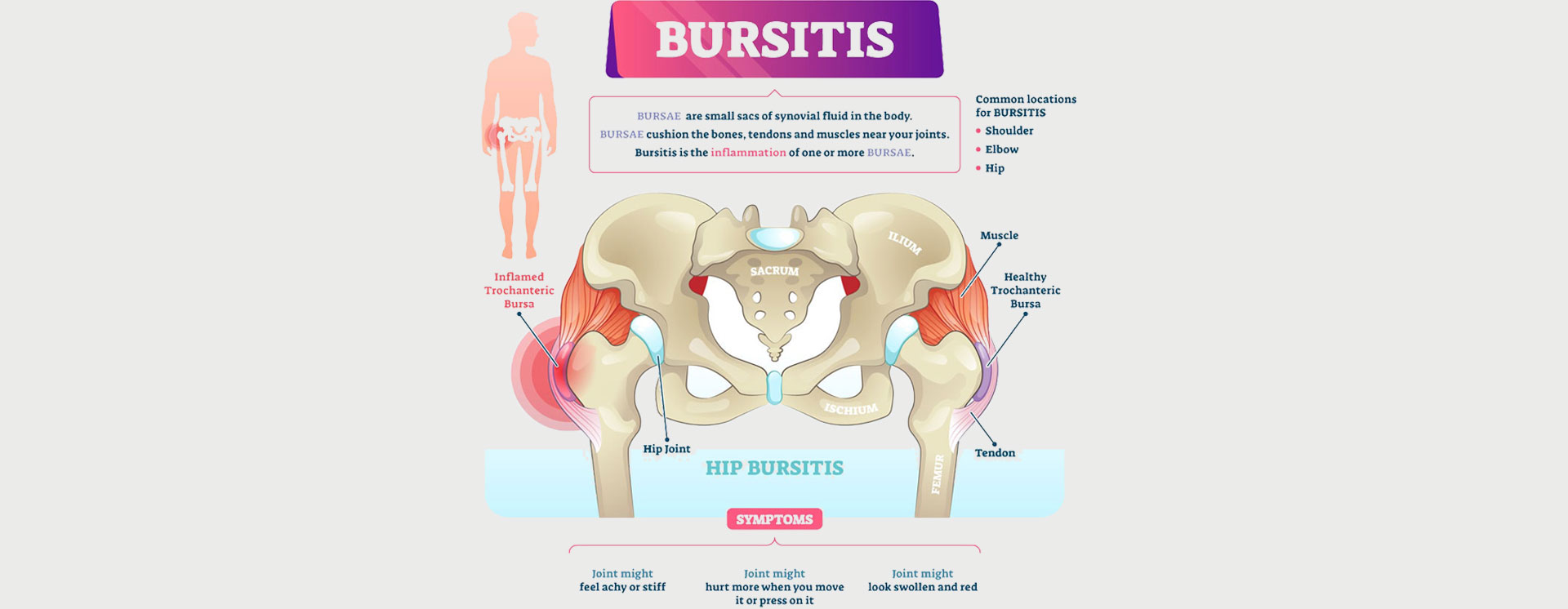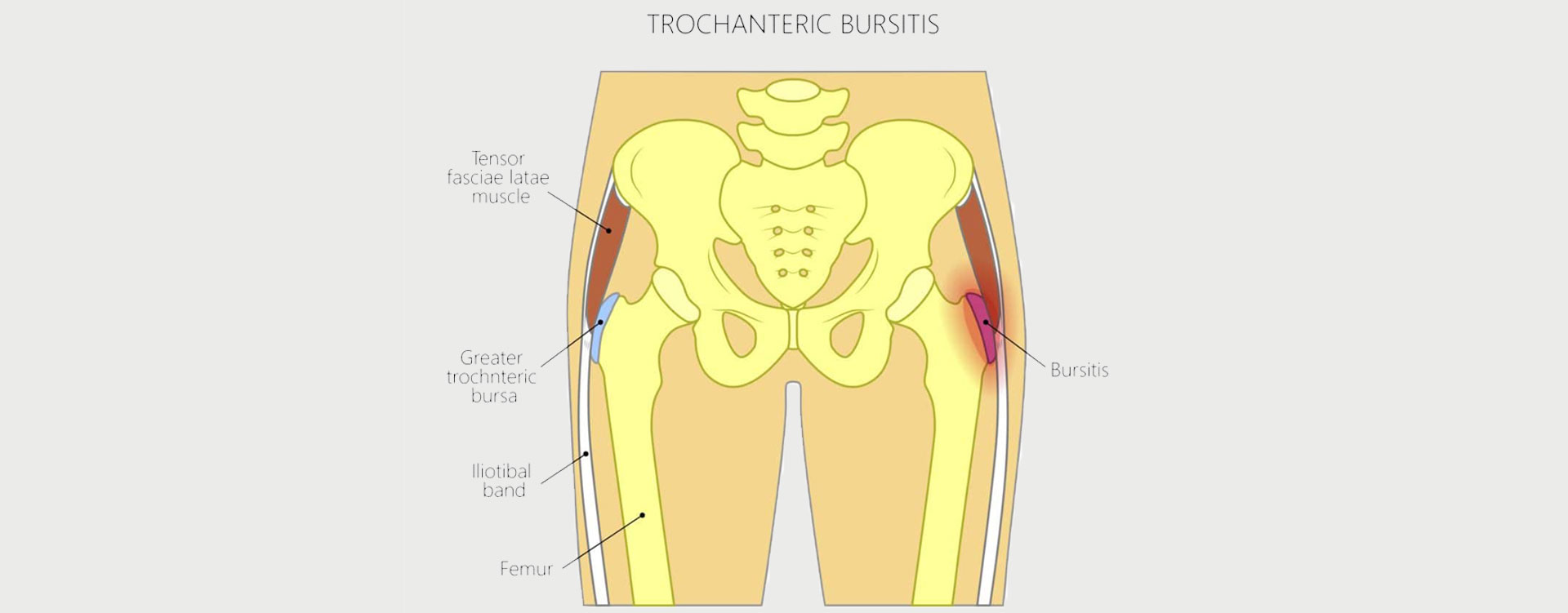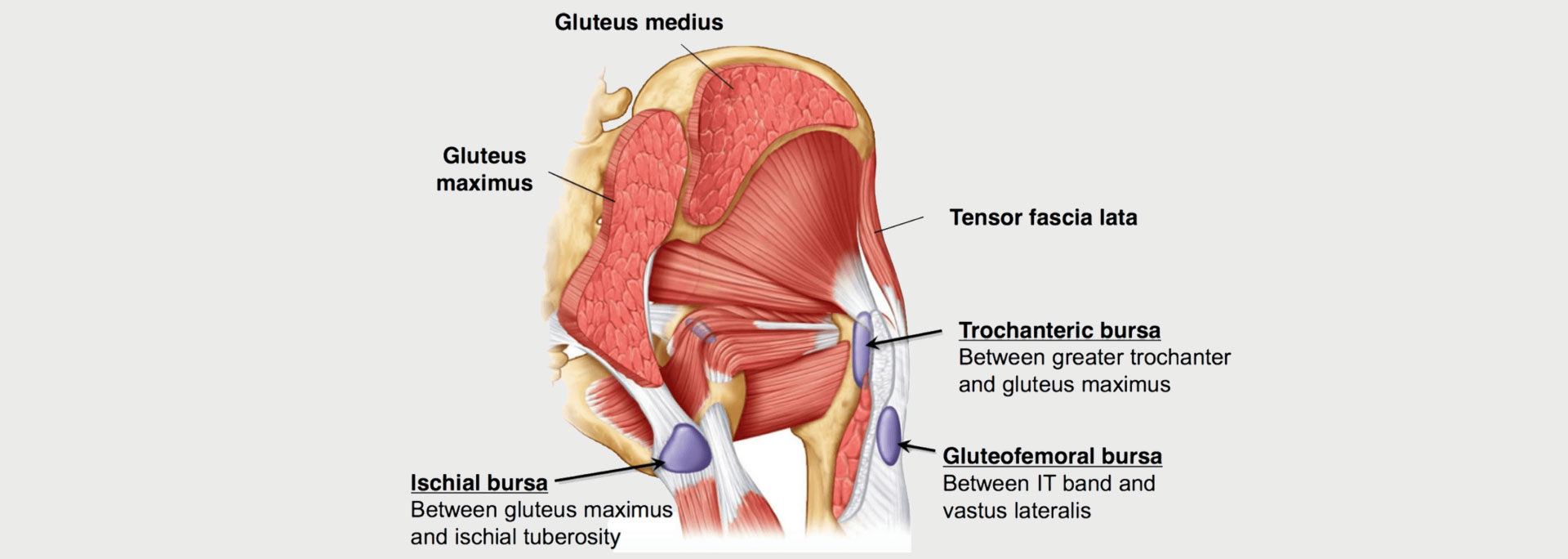HIP BURSITIS
HIP
GREATER TROCHANTERIC BURSITIS

Bursae are tiny, fluid-filled sacs designed to reduce friction at different parts of the body. The bursae provide padding between muscles, tendons, and bones at sites like the heel, elbow, knee, and hips. A small layer of synovial fluid protects the joint during movement.
When the bursae are repetitively strained, under pressure, overused, or traumatized, they can become inflamed. This condition is called bursitis. During bursitis, the bursae aren’t working properly, and cause friction and swelling, and can irritate the muscle or tendon. If bursitis isn’t addressed properly, the tendon and bursae can continue to trigger further irritation in each other.
The hip has two main bursae that may become inflamed: the greater trochanter and the iliopsoas bursa. The greater trochanter protects the point of the hip bone, and the iliopsoas bursa protects the inside, or groin side, of the hip.
Symptoms of hip bursitis will manifest as pain at either of these points, often accompanied by swelling. Pain is usually intense when bursitis first develops, and gradually becomes more of a widespread ache. Patients might find that the pain is worse at night after resting on the side of the hip, after sitting for long periods of time, or after running or biking.

Bursitis is more common in women and increases as a person gets older. For our athletic clientele at MOTUS, hip bursitis is most likely to occur in runners who regularly run on uneven surfaces. This causes friction in the hip which can cause the bursae to swell. While we see some runners develop bursitis from running up and down hills, we also sometimes see the condition develop as the result of abnormal biomechanics, like problems with the back, legs, or hips. Because of this, it’s important to conduct a full body examination when treating bursitis in order to find the underlying cause.
When we’re checking for bursitis, we look for pain, tenderness, swelling and redness. We’ll want to know when you started feeling discomfort, and what you were doing at the time. Your regular activity level will help us determine whether you could have developed bursitis as an overuse injury or through potential problems with posture and performance.
Although bursitis can be due to infection, in our sports-specific clinic it’s usually the result of movement and activity. In these cases, we can help heal the bursitis by using cold therapy and encouraging rest before gradually returning to activity. If the bursitis is a compensation injury from an issue with another joint in the body, we will help you develop a plan for total recovery.

3 Ways to Level Up Your Rehab and Injury Prevention With Us





